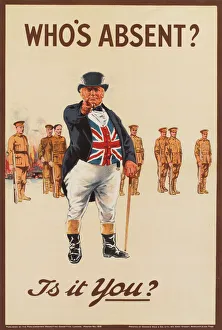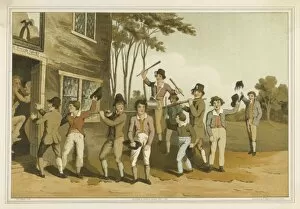Shaming Collection
"Unveiling the Power of Shaming: A Historical Perspective" In this captivating journey through time
All Professionally Made to Order for Quick Shipping
"Unveiling the Power of Shaming: A Historical Perspective" In this captivating journey through time, we delve into the intriguing world and its multifaceted manifestations. From thought-provoking artwork to historical events, these hints shed light on the power dynamics and societal implications associated with this age-old practice. The WW1 Recruitment Poster - "Who's Absent?" - confronts us with a poignant question, urging us to reflect on those who chose not to serve their country during times of war. It reminds us that they are be used as a tool to rally support or manipulate public opinion. "The Police Court, 1867, " an oil painting capturing a scene from the past, reveals how shame was employed as a means of punishment within legal systems. This glimpse into history prompts contemplation about justice and whether public humiliation truly serves its purpose. A black-and-white photograph titled "Chinese Punishment" transports us back in time between 1867-72, showcasing another facet of shaming. The image invites empathy for those subjected to such practices while raising questions about cultural differences in approaches towards discipline. "Dégradation d'un Chevalier, " an engraving depicting the degradation ceremony endured by knights, illustrates how shame was utilized within hierarchical structures. This portrayal encourages exploration into social norms and expectations imposed upon individuals throughout history. Genesis 9:20-27 presents Noah being covered with a cloak by his sons after experiencing disgraceful circumstances. This biblical reference highlights compassion amidst shame; it emphasizes that even in moments of vulnerability, support from loved ones can help restore dignity. An engraving featuring John Chrysostom condemning workers claiming poverty as an excuse for not owning Bibles exposes yet another dimension – religious condemnation based on socio-economic status. It provokes reflection on how religion has been leveraged throughout history to exert control over individuals' lives.










